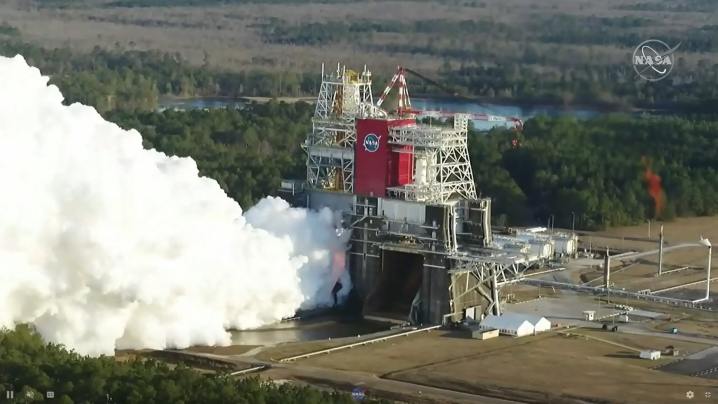
To carry the next generation of astronauts to the moon, you need a big rocket. That’s exactly what NASA is working on with its Space Launch System (SLS), a heavy-lift launch vehicle that includes the world’s largest rocket stage and which will take astronauts from Earth to the lunar surface and even eventually on to Mars under the Artemis program.
SLS has suffered its fair share of delays and cost overruns, but the project is nearing readiness for an uncrewed test flight later this year. Yesterday, its core stage was put through its paces in a hot fire test at NASA’s Stennis Space Center near Bay St. Louis, Mississippi, as the culmination of a test series called the Green Run.
The four RS-25 engines were fired for just over a minute, generating 1.6 million pounds of thrust as they will when used in a launch. However, the plan was to fire the engines for over 8 minutes, and it’s not yet clear why the engines shut down early.

“Saturday’s test was an important step forward to ensure that the core stage of the SLS rocket is ready for the Artemis I mission, and to carry crew on future missions,” said NASA Administrator Jim Bridenstine in a statement. “Although the engines did not fire for the full duration, the team successfully worked through the countdown, ignited the engines, and gained valuable data to inform our path forward.”
The NASA teams will now assess the data and try to work out why the engines cut out and how to correct the problem.
“Seeing all four engines ignite for the first time during the core stage hot fire test was a big milestone for the Space Launch System team,” said John Honeycutt, the SLS program manager at NASA’s Marshall Space Flight Center in Huntsville, Alabama. “We will analyze the data, and what we learned from today’s test will help us plan the right path forward for verifying this new core stage is ready for flight on the Artemis I mission.”



